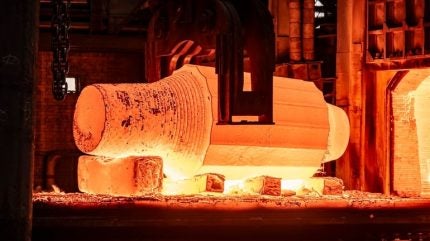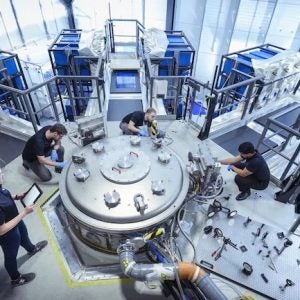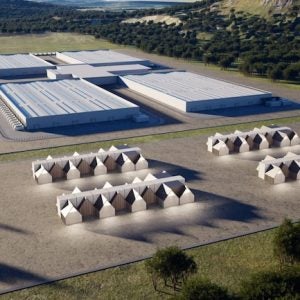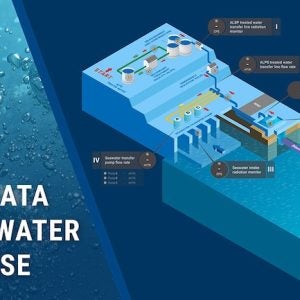
The expansion of Hungary’s Paks NPP (Paks II) is progressing. The production of the reactor vessel for unit 6 (Paks II unit 2) has begun in Russia, while the first turbine components for unit 5 (Paks II unit 1) are being manufactured in France, Hungarian Minister of Foreign Affairs & Trade, Péter Szijjártó, announced during a trip to London.
The Paks II project was launched in 2014 by an inter-governmental agreement between Hungary and Russia for two VVER-1200 reactors (units 5&6) to be supplied by Rosatom. The contract was supported by a Russian state loan to finance the majority of the project. The Hungarian Atomic Energy Authority issued the licence for the units in August 2022. In December 2024, Hungary’s National Atomic Energy Authority (OAH – Országos Atomenergia Hivatal) approved the preliminary safety report required for pouring first concrete for Paks II.
The Hungarian parliament earlier approved the extension of the life of the four existing VVER-440 power units at the Paks NPP for another 20 years. These units are now expected to operate until at least 2052-2057. Paks currently provides half of all generated and one third of the consumed electricity in Hungary.
Szijjártó said that in St Petersburg, at Europe’s largest automated forging plant, production had started of the reactor pressure vessel (RPV) for Paks 6. He emphasised that it is being manufactured to the highest possible European and Hungarian standards.
“There will be 700 quality checks during the production period. This reactor vessel, weighing 315 tonnes, 11 metres high, 4.5 metres in diameter, is a huge device that will have to withstand temperatures of 300 degrees Celsius and pressures of 162 bar for at least six decades,” he detailed.
Szijjártó added that the first elements for the unit 5 turbine were being manufactured in Belfort, France. “So we are now even further ahead in this important investment with the production of the most important equipment for both units 5 and 6. And the very fact that we have manufacturing sites in Russia and France makes it clear that this is a major international investment, the success of which is critical to securing Hungary’s long-term energy supply,” he stressed.
Rosatom confirmed that metallurgists at the AEM-Spetstal plant (part of Rosatom’s Mechanical Engineering Division) have begun forging a batch of blanks with a total weight of about 600 tonnes, from which elements for the Paks 6 reactor vessel will be produced. This was witnessed by Hungarian officials.
“The Paks-II NPP project is the largest nuclear investment in the European Union,” said Gergely Jákli, President and CEO of Paks II. “Thanks to the construction of two new power units at Paks, we will be able to produce large amounts of electricity in a sustainable manner for the Hungarian economy until the end of this century. The production of long-lead manufacturing equipment is proceeding smoothly, for which Hungarian specialists have also made and are making a lot of efforts, from design control to licensing and continuous production control. One of the tangible results of this is that the forging of the reactor vessel for unit 6 has begun now, and the final acceptance of the shells for the unit 5 reactor vessel will take place this month.”
Vitaly Polyanin, Vice President of ASE JSC (part of Rosatom) and Director of the Paks NPP construction project said the project is on schedule. “This is also evidenced by the fact that the production of long–lead equipment, the reactor vessel for unit 6, began a year after the similar stage of production of the reactor vessel for unit 5.”
Igor Kotov, Head of Rosatom’s Engineering Division said Russian metallurgists and machine builders have reached high production rates of equipment for Paks II. “At the same time, blanks for reactors of units 5&6 are in manufacture. In the future, we will start producing steam generators, pressure compensators, safety system tanks and other products for the primary circuit of the nuclear island of the plant, as well as the engine room. To ensure timely and high-quality production of NPP equipment, several of our enterprises will join the project: in Moscow, Podolsk, St Petersburg, Petrozavodsk and Volgodonsk.”
Forging of blanks is one of the initial stages in the production of reactor equipment. After shaping the blanks to the required shape, the parts will be transferred to another workshop for machining. Subsequently, two shells of the VVER-1200 reactor will be made from them. Shells are an important structural element of the reactor vessel. They are empty cylinders that are welded together.






